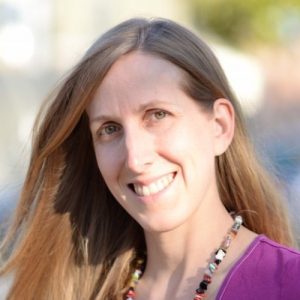by Jen Dionne

We’re part of the way through Q-NEXT’s first year, and the Extreme Scale Characterization (ESC) Thrust has made significant strides in our mission to image and identify qubit structure, dynamics, and sources of decoherence — from the single-spin qubit all the way to the system level.
The ESC team aims to pioneer new frontiers in three areas:
Imaging precision: To identify quantum-state behavior and create new spin qubits, ESC will achieve spatial, temporal, and spectral precision at the picometer and picosecond scales.
Environmental control: ESC will create quantum-relevant in operando or in situ conditions that allow for the real-world observations of quantum systems.
Correlation: To optimize quantum performance in materials, devices, and systems, ESC will develop correlated, multimodal techniques that span length and time scales — from the subatomic to the system level.
One of the joys of working with Q-NEXT is having access to facilities and tools that operate in few other places. With ESC, a collaborator will feel like a kid in a candy store — there are a multitude of incredible capabilities for quantum measurements, each of which provides unique insight:
At Stanford University, the Nano Shared Facilities have outfitted their state-of-the-art transmission electron microscope with spectrometers to enable subangstrom-scale optical imaging of various quantum materials and devices. This technique can correlate single-photon optical emission with the material’s chemical composition, atomic structure, and strain. At Argonne National Laboratory, the Advanced Photon Source will provide a beamline outfitted with a high-resolution, near-field optical microscope to see how photons, phonons, and electron spins interact in different quantum materials. And at SLAC, researchers are using MeV, ultrafast electron diffraction to examine bulk materials at 5-femtosecond and micron resolution. Efforts are underway improve this spatial resolution to about 100 nanometers while maintaining high temporal resolution.
Importantly, each of these techniques works in dynamic environments and so can probe quantum systems across a range of temperatures and with a variety of electrical, optical, or magnetic stimuli.
This year, these techniques are being applied to optimize silicon vacancy centers in diamond in a Stanford-SLAC collaboration and to quantum memories in a burgeoning collaboration between the University of Chicago and Stanford.
ESC is excited to turn these prototype methods into national resources, and as tools in the Q-NEXT effort, they are perfect complements of each other. Together, the above techniques enable us to characterize devices across time and length scales spanning 14 orders of magnitude.
In the next year, the ESC group is eager to connect researchers across academic, national lab, and industry sectors to tackle its list of important milestones: imaging and creating optically active spin qubits; developing multimodal, quantum-relevant environments compatible with synchrotron, XFEL, electromagnetic, and scanning probe methods; and imaging time-resolved, 3-D large-volume spin qubits and their dynamics.
The future of quantum characterization is bright, and ESC will provide a platform for diverse ideas and approaches to converge and coalESCe.
Stay tuned!
Jen Dionne is the Q-NEXT Extreme Scale Characterization Thrust lead.
This work was supported by the DOE Office of Science National Quantum Information Science Research Centers.
